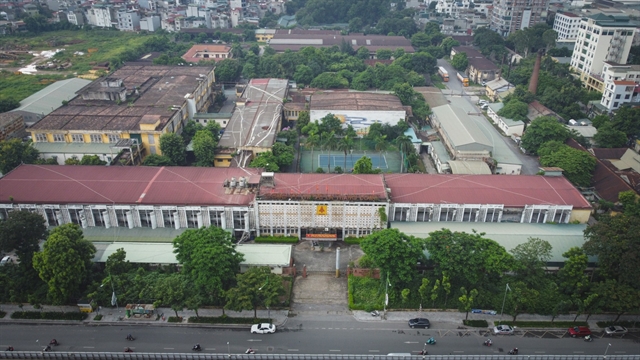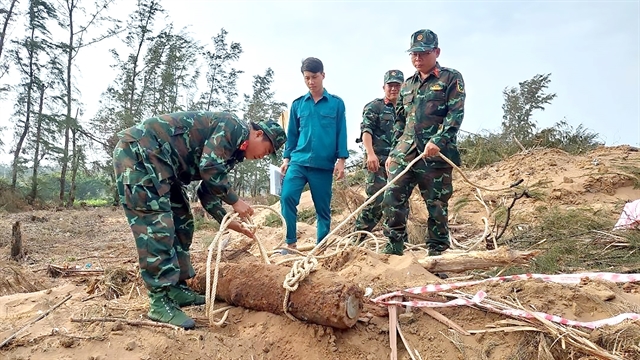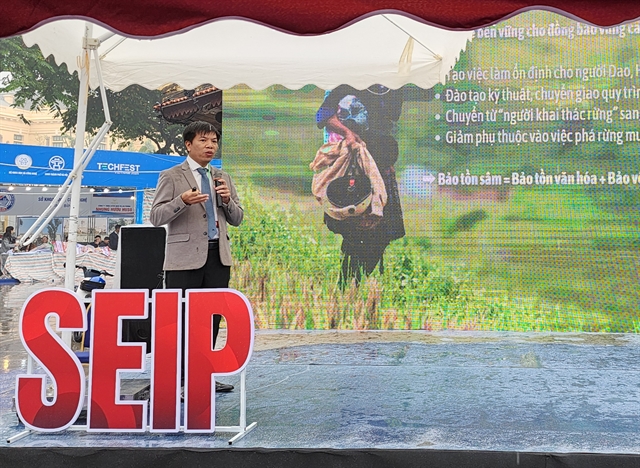 Opinion
Opinion

 |
| Military officers in the southern province Trà Vinh earlier this month handle an unexploded bomb left from the war against the United States. — VNA/VNS Photo |
HÀ NỘI — As a Regional Conference on Mine Action for Sustainable Peace and Development takes place (29-30 March 2023), Korea International Cooperation Agency (KOICA) Country Director Cho Han-Deog and UNDP Resident Representative Ramla Khalidi offer their perspectives on this persistent issue.
Generations of Vietnamese, Cambodians and Laotians have lived in fear that their next step could be their last.
Most of the 7.5 million tonnes of ordnance dropped during the conflict in the 1960s and 70s fell on Việt Nam. Half a century on from the signing of the Paris Peace Accords, a fifth of the country remains contaminated. Living next to minefields and contamination has internalised terror.
“I found a mine at my backyard when I was gardening in 2009. The anxiety of landmines has always been with me,” said Y Quyết, a woman living in the central province of Quảng Bình.
Over the past three decades, the UNDP has worked on mine action in over 50 countries. KOICA has supported mine action in Việt Nam, Laos, and Cambodia as part of the Mekong Peace Community Programme. Not only unexploded ordnance threatens lives, but also contamination curtails the opportunity to farm and make a living, to prosper in peace and security.
As Oscar-winner and UNDP Goodwill Ambassador Michelle Yeoh said at a Security Council meeting on Mine Action in 2021: “Mine action is linked to the Sustainable Development Goals, and it is important to look at the issue beyond square meters cleared.”
The Government of Việt Nam has pledged to end further accidents due to mines and unexploded ordnance by 2025. KOICA and the UNDP are committed to supporting the Government in realising this goal. This means bringing an end to losing lives and limbs to this deadly legacy of war and to release contaminated land for development and productive use.
In partnership with the Ministry of National Defence, KOICA and the UNDP strengthen institutions to tackle the challenges posed by landmines, providing explosive ordnance risk education, data management, victim assistance, and undertaking clearance operations.
In three years, the project has surveyed 17,000 hectares of land, equivalent to 20,000 football fields, and cleared 10,000 contaminated hectares. Meanwhile, 450,000 local people, especially children, have received education on the risk of unexploded ordnance. KOICA and the UNDP will continue supporting Mine Action, for instance supporting 10,500 farmers to apply smart-climate and resilient agriculture and upgrading or building 50 health stations.
People like Y Quyết can only imagine a life without fear and a chance to develop the land so that his children can prosper. Every day, they wait for mine action teams to undertake the painstaking progress of clearing the land acre by acre.
On April 4, we mark the International Day for Mine Awareness and Assistance in Mine Action with the message that mine action cannot wait. To accelerate progress, we must enhance regional and international cooperation to share ideas and technologies that can lead to concrete and long-lasting results on the grounds.
In Cambodia, the government has started to use drones to detect landmines. In Việt Nam, an online registry and information management system for people with disabilities and unexploded ordnance survivors has been used to conduct an assessment in the country’s most contaminated provinces of Quảng Bình and Bình Định.
“Our vision is a world free from the threat of landmines and unexploded ordnance. It is important that countries collaborate to spur innovation in the region to end the deadly legacy of unexploded ordnance. There is still much work to do to reduce risk and build a better future for mine-affected communities,” KOICA and UNDP officials noted in their writings. — VNS




